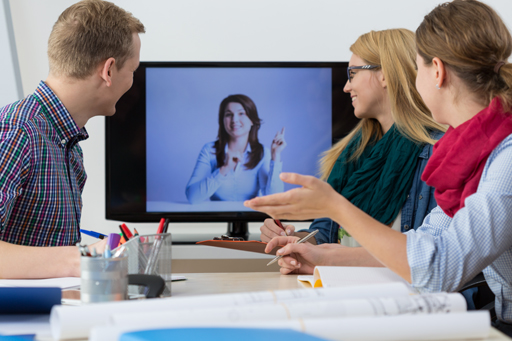3 Planning a meeting

Good meetings are normally well planned. In formal meetings it is usually the chair and the secretary who are responsible for organising the meeting. For more informal team or project meetings, the responsibility usually falls on the team leader, manager or whoever calls the meeting. Where it is not obvious who has this responsibility it is a good idea to appoint someone to do the job.
Below is a list of useful things to do when preparing for a meeting (most of which apply to face-to-face meetings).
Purpose and participants
- Decide the purpose of the meeting and what type of meeting you want it to be. (Remember different types of meeting may require somewhat different things.)
- Think through who needs to participate in the meeting. Sometimes this will be fairly obvious, but in other cases – for example a public consultation meeting – you may need to think quite carefully who you would like to invite and how they can best be reached, as it might include people attending by phone or online.
When and where
- Decide a place, date and time to hold the meeting. If it is a face-to-face meeting, make sure the venue is suitable for the number of people you expect to attend, the type of meeting it is and that it meets the needs of any people with special requirements, such as wheelchair access, and so on.
- If any special equipment is needed for the meeting, such as flip charts or laptop and projector for presentations or for people joining online, make sure these are available.
- If it is to be a long meeting, it is often a good idea to organise some refreshments or to remind people to bring their own.
Constructing the agenda
For formal meetings it is normal to have an agenda and any papers or reports in advance of the meeting so that people have time to read and prepare. At more informal meetings it may be acceptable for people to raise issues at the meeting itself and plan together how they will work through the items. Below, the emphasis is on preparing an agenda for formal meetings.
- It is normal for the chair and the secretary to put together the agenda for formal meetings. Often there may be a number of standard items that appear regularly on the agenda, such as any apologies, previous minutes and matters arising at the beginning, and any other business and the date of the next meeting at the end. Some items may occur periodically, such as financial or progress reports, and others will depend on what are important issues at the time.
- After a rough agenda has been constructed, it is useful to go through the items and decide which are main discussion items, which require decisions and which are just for information or for ratification. Then allocate a rough time for each item, making sure the important discussion items get the most time. If the meeting is long, make sure you plan in a break, so people can get refreshments or go to the toilet. Add up the times and make sure it does not exceed the time available for the meeting. If it does, the agenda may need reducing or the approximate timings may need revising.
- Make sure the agenda and any papers are circulated in advance of the meeting. It is usually a good idea to circulate them at least a week before a business meeting.
Activity 3 Agendas
Think of a meeting in which you were recently involved.
- Did you receive an agenda and any reports or papers in sufficient time to prepare adequately?
- Was the agenda appropriate?
- Was the right amount of time allowed for each item?
- In light of your answers, how could the preparation for the meeting have been improved?
Comment
As an example, a trustee recently attended a meeting in a room that was far too small for the number of participants. The agenda and papers arrived by email on the day, so there was no time to read everything and to feel well prepared. However, the agenda worked well for the time available for the meeting, and after an initially shaky start, the meeting improved. Certainly, better preparation beforehand would have improved how people felt before and at the start of the meeting.
A number of functions are important if meetings are to be run successfully: someone needs to chair and facilitate the meeting and someone needs to record what happens.
In formal meetings, these functions will usually be undertaken by the chair and the secretary respectively, who are normally appointed to serve for a number of years. In more informal meetings, who carries out these functions may be decided at the meeting or rotated on a regular basis. However, what this ignores is the contributions of ordinary members, which, of course, are also crucial to the success of any meeting.
How to carry out the functions of chairing, participating as an ordinary member and recording what happens will be explored in the next section.
